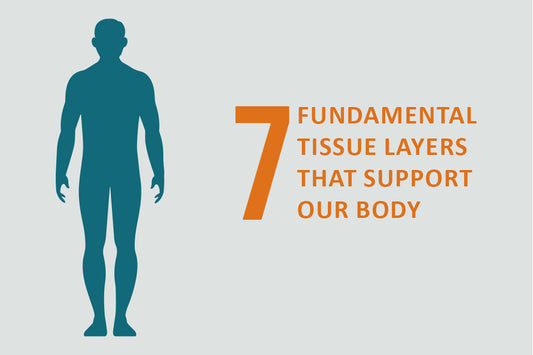If you've ever seen someone balance on their head in a yoga class and thought, "I could never do that," you're not alone. Headstand, also known as Sirsasana, may look intimidating at first, but with a little practice and the right approach, it becomes much more accessible. It’s not just about flipping upside down—it’s about balance, focus, and building strength gradually.
This blog will walk you through everything you need to know how to do a headstand sirsasana in yoga, from warming up with helpful poses to learning how to shift your weight correctly and understanding how to take care of your head and neck during the pose.
What is Sirsasana?
Sirsasana (pronounced shir-sha-suh-nuh) is often called the king of yoga poses. It involves balancing the body upside down on the head with the support of your forearms. While it may seem like a showy pose, Sirsasana is more than just an Instagram-worthy move. It’s a full-body experience that challenges your core, strengthens your upper body, and encourages deep mental focus.
Start with the Basics: Prepare Your Body
Before attempting a headstand, it’s important to build strength and awareness in your body, especially in your upper body, shoulders, arms, and core. Rushing into the pose without proper preparation can lead to discomfort or injury.
- Warm-up with Dolphin Pose
Dolphin pose is like a downward dog, but with your forearms on the ground instead of your palms. This helps build shoulder strength and teaches you how to bear weight on your forearms—a key part of Sirsasana.
- Come to all fours and then lower your forearms to the mat.
- Lift your hips toward the ceiling like in downward dog.
- Keep your shoulders engaged and press through your forearms.
- Child’s Pose for Neck Awareness
Child’s pose helps ease tension and gives your neck a gentle stretch before and after practicing headstand. It’s also the perfect resting pose in between attempts.
- Sit back on your heels with your arms stretched forward.
- Let your forehead rest on the mat.
- Breathe deeply and relax your upper body.
Key Areas to Focus On
When learning Sirsasana, it’s crucial to bring attention to how you shift your weight, the strength of your upper body, and the positioning of your head and neck.
Shifting Your Weight
Shifting your weight the right way makes all the difference. Most beginners make the mistake of dumping all their weight on the head. Instead:
- Start on your knees and place your forearms on the ground, forming a triangle with your hands and elbows.
- Interlock your fingers and place the crown of your head gently on the mat between your hands.
- As you start to lift your hips, walk your feet closer to your head.
- Shift your weight slowly forward so that your hips stack above your shoulders—not your neck.
Engaging the Upper Body
Your upper body—especially your shoulders and arms—should be doing most of the work in this pose.
- Press firmly into your forearms.
- Draw your shoulder blades away from your ears.
- Keep your core tight to maintain balance.
Protecting the Head and Neck (without saying “protect”)
To help maintain the health of your head and neck, always make sure:
- Your head is placed on the crown, not the forehead.
- Your neck stays long, not compressed.
- You never jerk your body while coming up or down from the pose.
Simple Steps to Do a Headstand (Sirsasana)
Here’s a beginner-friendly breakdown of how to perform the pose:
-
Start in Child’s Pose
Take a few breaths to center yourself. -
Move into Dolphin Base
Place your forearms on the mat, elbows shoulder-width apart, and interlace your fingers. -
Position Your Head
Place the crown of your head gently on the floor, cradled by your hands. -
Lift Your Knees
Raise your hips and start walking your feet toward your head. -
Find the Lift
Bring one knee at a time into your chest. Practice holding here before straightening your legs. -
Straighten Your Legs
Once balanced, slowly extend both legs toward the ceiling. Keep your body straight and strong. -
Hold and Breathe
Stay for a few breaths (start with 5–10 seconds). Slowly build up your stamina over time. -
Come Down Slowly
Reverse the steps—bring your knees back to your chest, then lower your feet. -
Rest in Child’s Pose
Always follow up with Child’s Pose to help ease any tension.
Health Benefits of Sirsasana
Practicing Sirsasana regularly may support your wellness in several ways:
- Supports mental clarity: Being upside down can refresh your perspective and focus.
- Helps restore posture: Engaging your spine and core in this pose may help with better alignment.
- Encourages upper body strength: Your arms, shoulders, and core work together to keep you balanced.
- May help ease stress: The calming focus required for headstands can be grounding.
However, if you have any health issues or discomforts related to your neck, back, or circulatory health, it’s a good idea to consult your yoga teacher or healthcare provider before trying this pose.
Final Thoughts
Learning how to do a headstand takes time, patience, and consistency. Don’t worry if it doesn’t happen right away. Start with the foundational poses like Dolphin and Child’s Pose. Focus on shifting your weight correctly and keeping your upper body engaged. Most importantly, listen to your body and go at your own pace.
Remember, yoga isn’t about being perfect—it’s about progress and presence. With regular practice, you might surprise yourself by how strong, steady, and confident you become—not just upside down, but in everyday life too.






